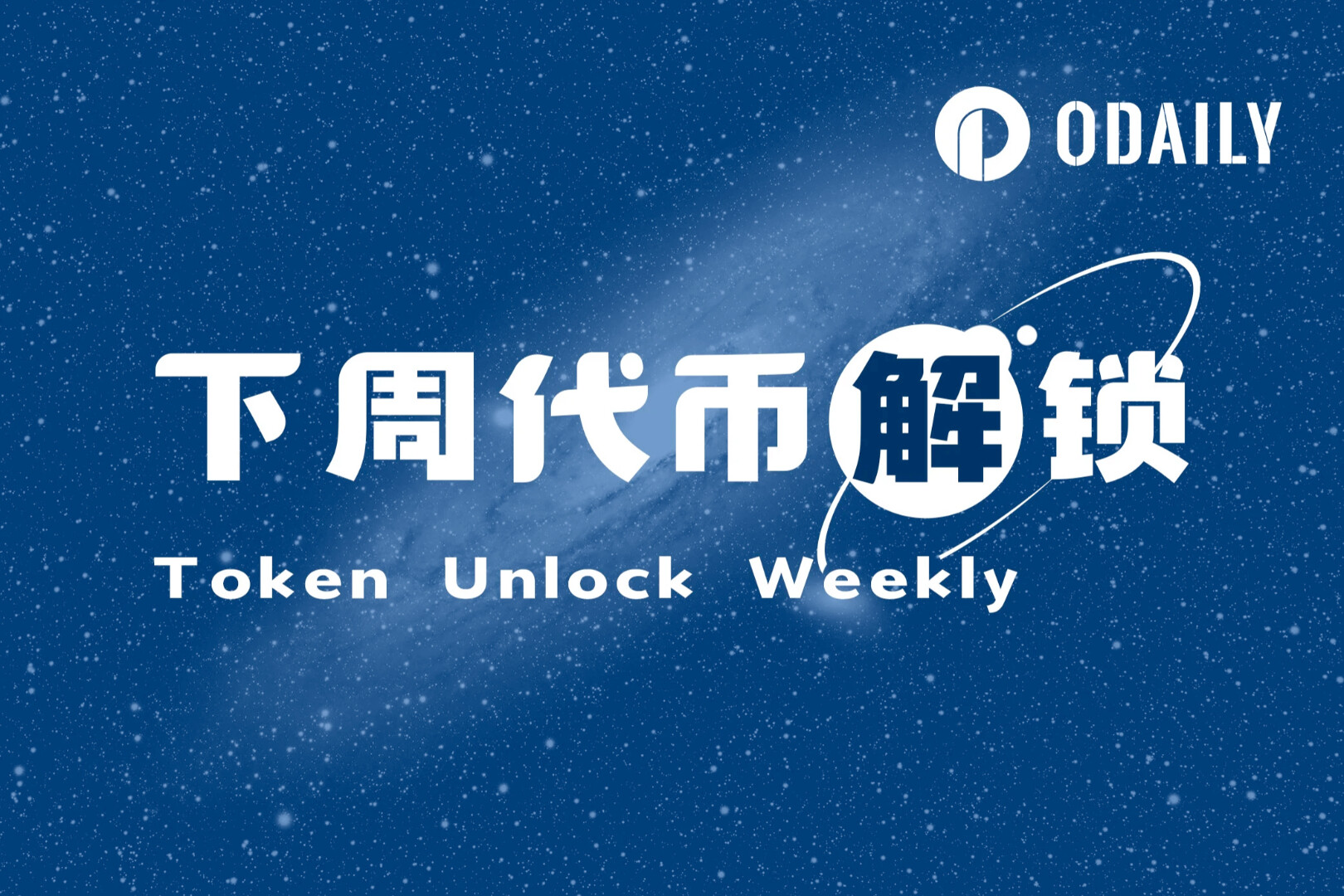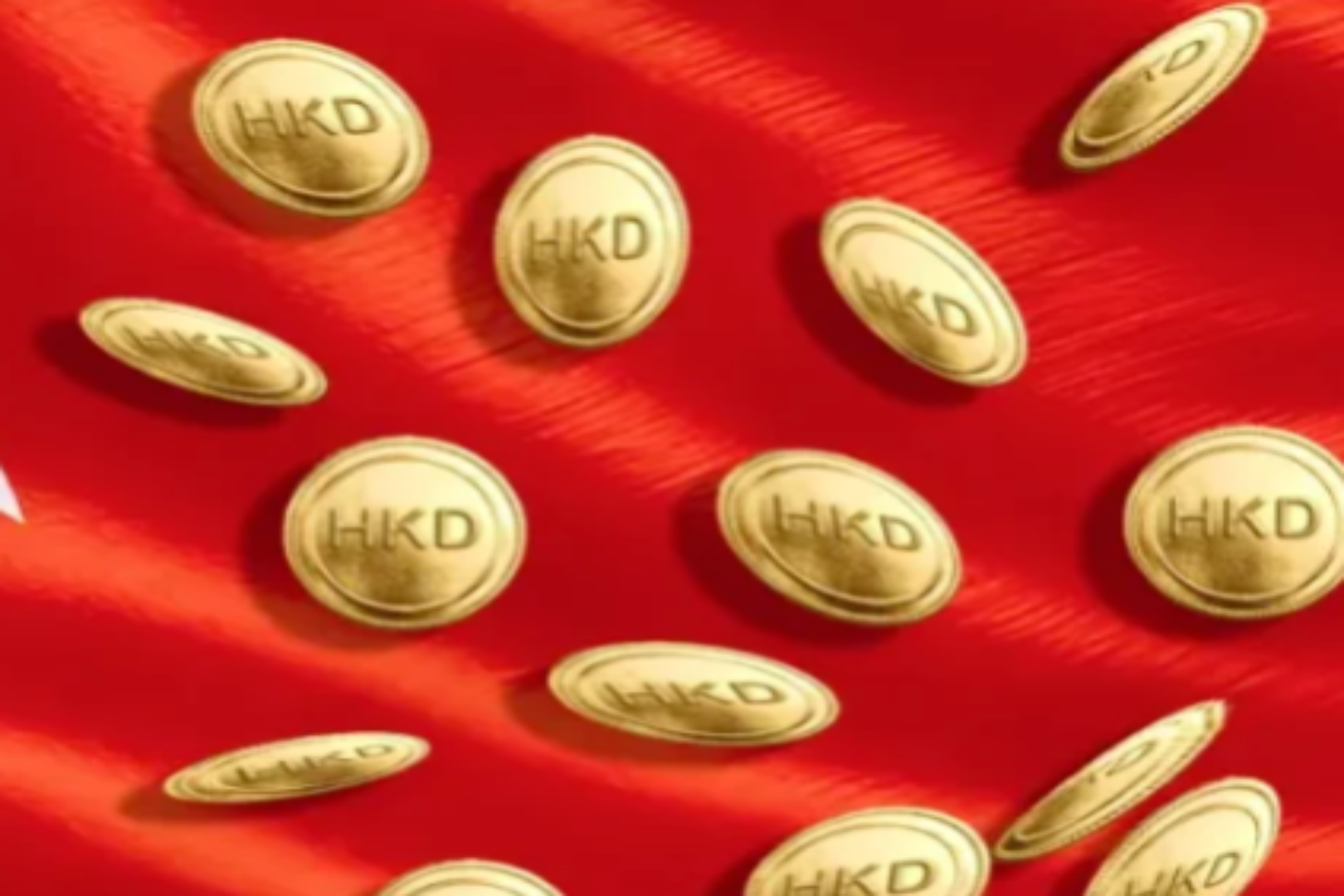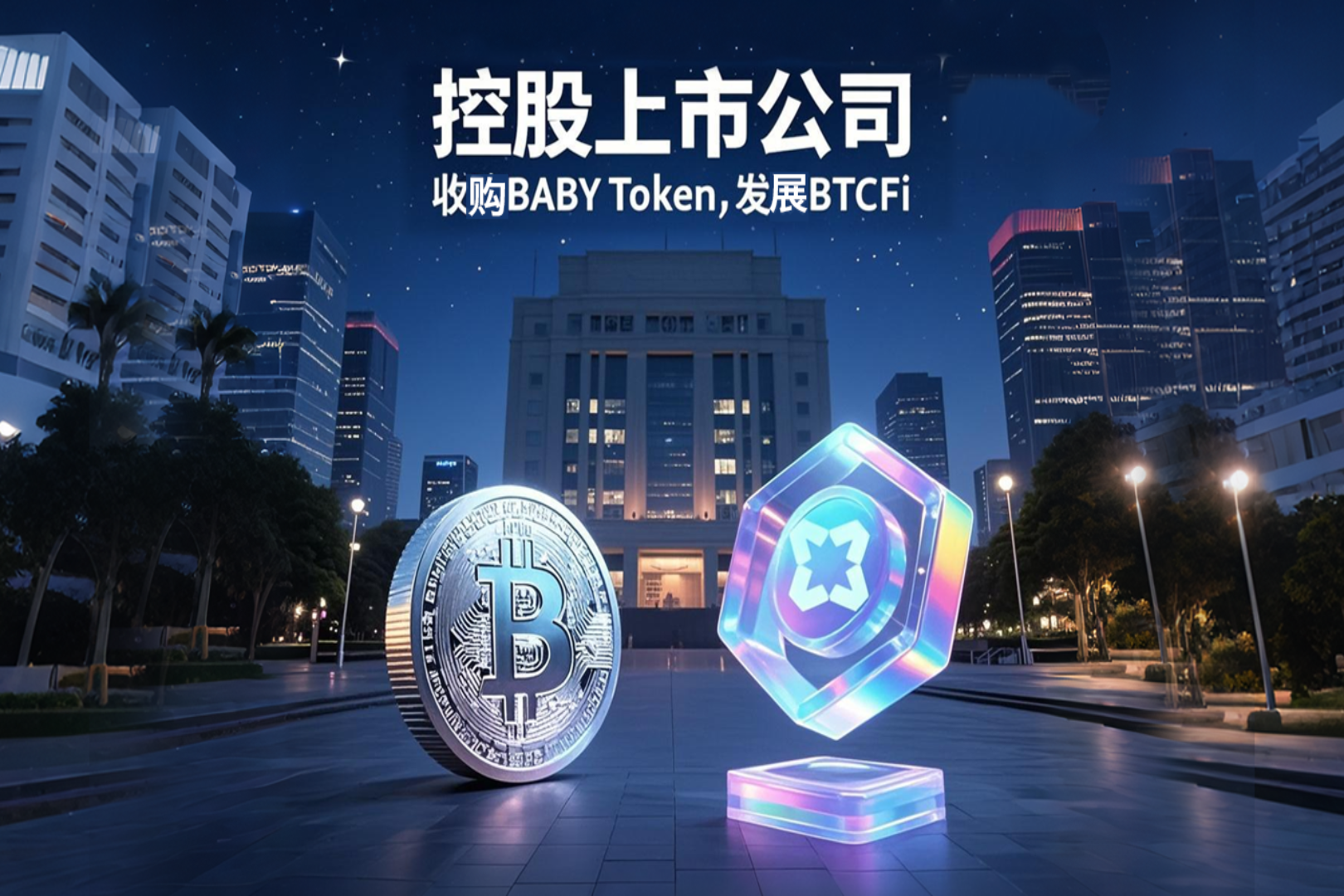Original author: Grapefruit, ChainCatcher
Original author: Grapefruit, ChainCatcher
On March 23, the ARB tokens airdropped by Arbitrum to community users will be open for collection. According to the statistics of @Blockworks_ on Dune, the number of ARBs airdropped to community users is 1.162 billion, and the number of wallet addresses receiving airdrops is about 625,000. The average number of ARBs airdropped per address is 1859.
According to L 2b eat, on March 21, the total locked-up (TVL) of encrypted assets in the Ethereum Layer 2 sector was 6.29 billion US dollars, of which, the TVL on the Arbitrum chain was 3.85 billion US dollars, an increase of 21.2% in the past 7 days. In addition, the number and activity of its ecological users have not cooled down due to the temporary end of the airdrop incentive. Dune data shows that the daily active users and transaction volume on Arbitrum are still reaching new highs.


image description
At present, the Arbitrum ecosystem has deployed applications in multiple sectors such as wallets, cross-chain bridges, DEX, lending, games, and NFT. Especially in the DeFi sector, well-known mainstream applications such as Uniswap, Sushiswap, Aave, and Curve have been deployed on the chain. So, in addition to mainstream applications, what new applications and investment opportunities are there on the Arbitrum chain?
first level title
Looking at Arbitrum Ecology from a Macro Perspective
Before introducing specific projects, we can have a more macroscopic understanding of the Arbitrum ecosystem from the perspectives of token economics, DAO governance, and technical routes——
On the evening of March 16, the Arbitrum Foundation announced the launch of the DAO organization for the Arbitrum One and Arbitrum Nova networks, launched the governance token ARB, and announced the community airdrop reward plan.
The total initial issuance of ARB is 10 billion, with a maximum expansion of 2% per year. Among them, the Arbitrum community will hold about 56%, which includes 11.62% airdropped to community users, 1.1% to DAO organizations, and the remaining community tokens will be Entering the treasury controlled by the new Arbitrum DAO, how to distribute it will be decided by the vote of ARB holders; another 44% will flow to the team and investors of Offchain Labs, the development company that established Arbitrum.
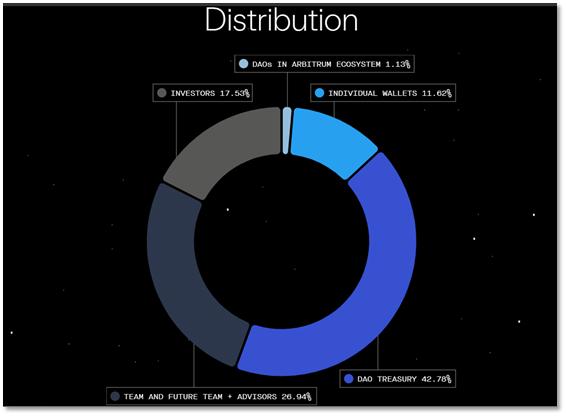
image description
ARB allocation
ARB is a governance token and is not used to pay any fees on the Arbitrum chain. Currently, the gas fee paid by users for interactions on the Arbitrum chain is still ETH.
The ARB will be used to participate in the governance of the Arbitrum DAO, which will manage the Arbitrum ecosystem, including having decision-making power over the Arbitrum One and Arbitrum Nova chains and their underlying protocols. This means that ARB token holders can vote on key decisions of networks such as Arbitrum One and Arbitrum Nova through the Arbitrum DAO organization, including how to upgrade the technology of the chain to how the income of the chain is allocated to support the ecosystem, thereby To enable ARB holders to collectively decide and shape the future and direction of Arbitrum.
It’s worth mentioning that Arbitrum’s DAO governance is self-enforcing. Typically, most DAOs have governance token holders vote on proposals, and then the project's core team enforces the results by making changes to the network code. The difference with the DAO set up by Arbitrum is that the code base will automatically change according to the final voting results, which means that the DAO's votes on on-chain behavior will directly have the power to influence and execute its on-chain decisions, directly controlling the network.
Of course there is some risk with this, if a malicious person changes the code through the voting process then this will automatically be updated in the code as well. To this end, the Arbitrum Foundation has also established a 12-member Arbitrum Security Committee, which can take quick action in emergency situations to ensure the security of the chain, such as serious and urgent errors found in the software, the Security Committee Can act quickly.
L3 (Layer 3 network) refers to the block network built on L2 Arbitrum, which is Arbitrum's L2. The Rollups technology is used in the L2 network Arbitrum to batch transaction data to the L1 Ethereum mainnet. L3, built on Arbitrum, will use a similar Rollup to batch its on-chain transaction data to Arbitrum and then Rollup into Ethereum, which will allow increased transaction throughput at relatively low cost.
first level title
TVL jumped to fourth, what are the Arbitrum ecological applications?
On March 17, user @Hunter, a core member of the Arbitrum community, posted the comment "Do you think Odyssey will not come back? Think again" in the Discord community. Many users interpreted this as Arbitrum's second round of Odyssey ecological incentive activities will come.

image description
Arbitrum community core member @Hunter speaks about the Odyssey event
In addition to mainstream DeFi protocol applications such as Uniswap, Sushiswap, Curve, and Aave, what other applications does Arbitrum have?
secondary title
Arbitrum Bridge is the official cross-chain bridge on the Arbitrum chain, which supports users to transfer assets from the L1 Ethereum mainnet to the Arbitrum One and Arbitrum Nova networks on L2; it also supports users to withdraw assets from L2 to the L1 mainnet.
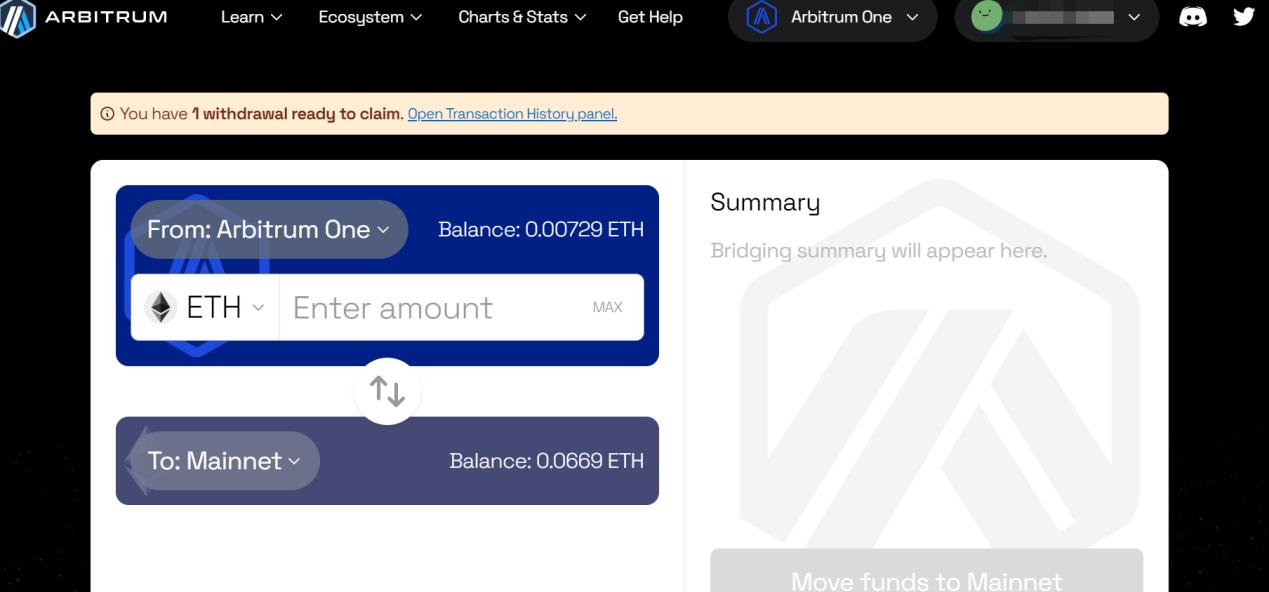
image description
Arbitrum Bridge cross-chain bridge
However, nowadays, there are third-party cross-chain bridges that support users to withdraw assets from L2 to L1 instantly, without waiting period, such as Hop Protocol.
secondary title
2. Decentralized perpetual contract exchange GMX (GMX)
GMX is a decentralized derivatives exchange built on the Arbitrum chain, which supports spot and perpetual contract transactions, and its core business is still perpetual contract transactions. At present, GMX has been cross-chained to Avalanche, and users only need to connect their wallets and trade without registering an account. According to the official website, as of March 21, the historical trading volume on the GMX platform has exceeded 113.3 billion US dollars, the number of users has exceeded 250,000, and the open interest is 160 million US dollars.
Trading users can start trading after depositing USDC, ETH or WBTC in GMX as a margin. GMX supports up to 30 times leverage trading on assets such as BTC and ETH.
At present, there are two main modes of decentralized contract trading applications common in the market. One is the order book mode represented by dYdX, which uses the funding rate mechanism to balance the positions of long and short positions, and the centralized contract exchange ( The CEX) model is similar; the second is the AMM (Automatic Market Maker) model represented by the Perptual (PERP) application, which is often called the "contract version of Uniswap".
In addition, GLP is also a special Token in GMX, also known as a liquidity token, which is a collection representative of a package of encrypted assets (similar to an index fund), and the price will change with the changes in the assets in the asset pool. When users provide liquidity to GMX, they can directly purchase and pledge GLP with BTC, ETH, USDC and other single assets on the platform, instead of providing two tokens at a ratio of 1: 1, such as ETH/USDC; but users When withdrawing liquidity, simply exchange GLP for the desired asset. Since liquidity can be provided by providing a single asset, there is no need to consider the impermanent losses common to LPs.
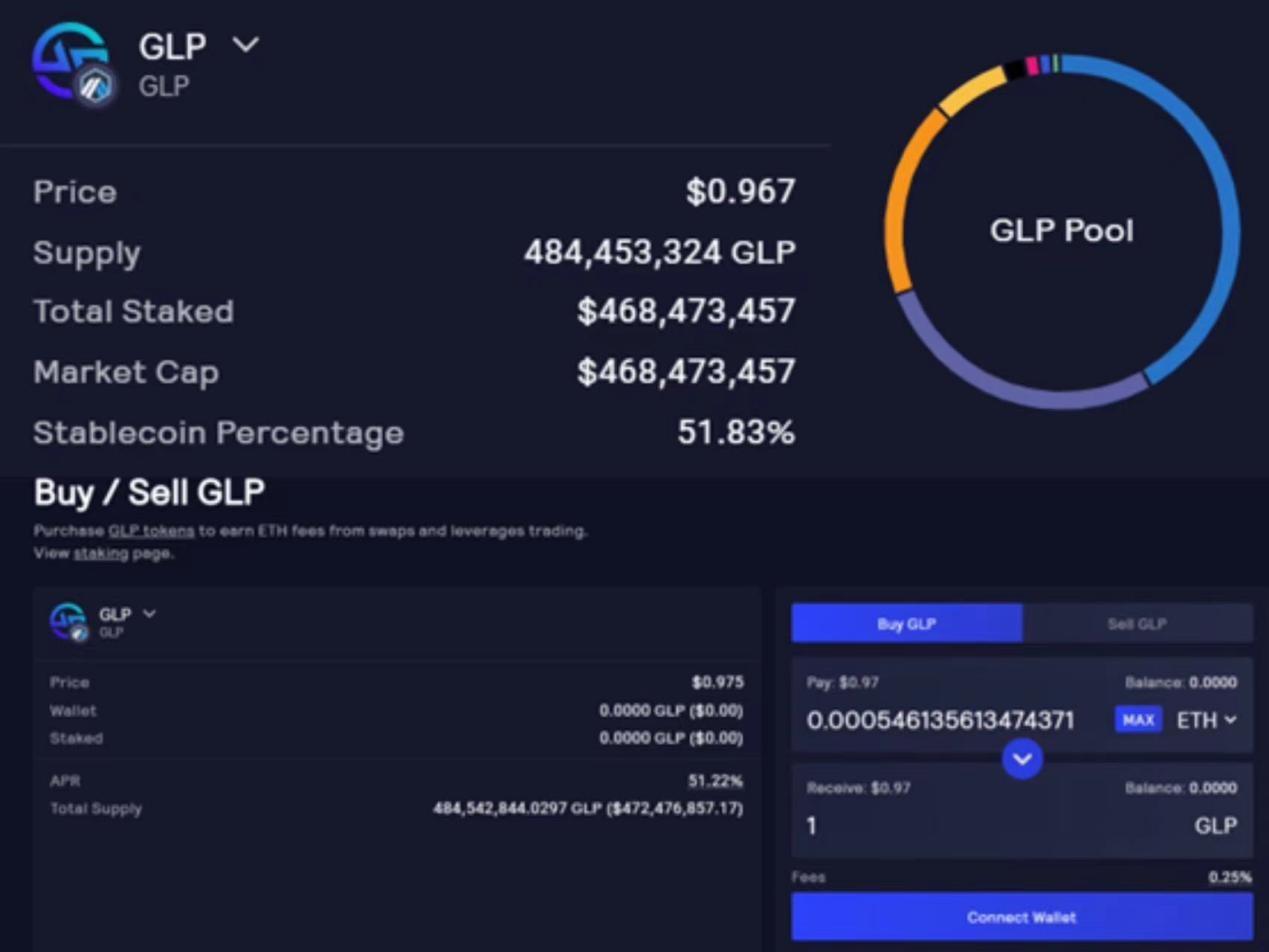
image description
GLP Prices and Data
As of March 20, the value of crypto assets held in Aribtrum’s GLP pool was approximately $480 million.
The name of GMX’s platform governance token is also GMX, and the total supply is about 13.25 million. Today, it is tentatively reported at $82, with a market value of $700 million.
secondary title
3. Native decentralized trading platform Camelot (GRAIL)
Camelot is the native DEX on Arbitrum, which supports instant exchange and trading of native assets in its ecosystem. Currently, the Camelot app has a TVL of $99.84 million.
Camelot claims to be an innovative and highly flexible DEX. It adopts the Uniswap V2+Curve dual AMM mechanism to support low-slip trading volatility and stable Token trading pairs.
On the basis of these functions, the Camelot platform has added the Launchpad function and supports dynamic directional transaction fees to support the project side to set different fees for each fund pool, and can also define fees according to the direction of the transaction. For example, a newly launched project may need to limit selling pressure, and the handling fee for selling can be set higher than that for buying. Taking Camelot’s own platform currency GRAIL as an example, the handling fee for buying with USDC is 0.3%, and the handling fee for selling is 1%.
In addition, Camelot combines LP assets with NFT to support project parties to set specific incentives according to needs.
On Camelot, when users provide LP, they can create LP Token as a pledged position spNFT. Compared with ordinary LP liquidity certificates, spNFT is an interest-earning position certificate. In addition to obtaining regular transaction fees, it can also obtain other benefits rewarded by other project parties, such as locking LPs to increase profits.
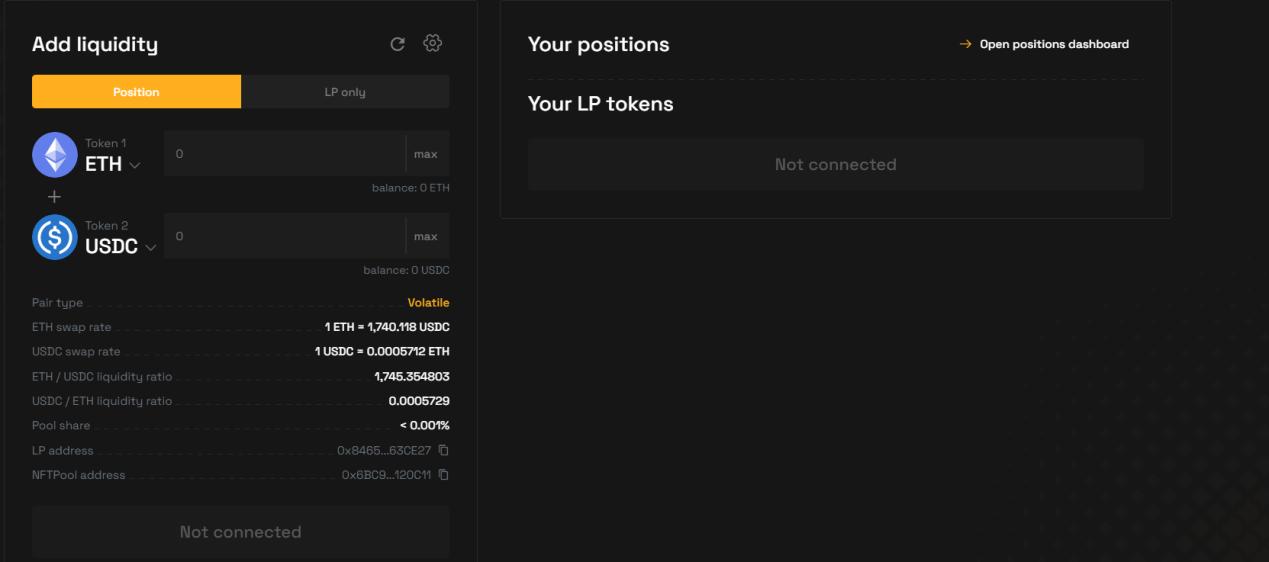
image description
Camelot converts LP to spNFT
When providing liquidity on the Camelot platform, users can choose "Position" and "LP only". If you choose the former (Position), the user will automatically create a pledge position with LP while providing liquidity, and choose the lock-up time of liquidity. The benefits are different for different lock-up times. At this time, what users get after providing liquidity is not LP tokens. Instead, spNFT represents a pledged position in Camelot; if the latter (LP only) is chosen, the liquidity provider can only get a share of the transaction fee of the fund pool.
In addition, the project party can set additional incentives through the incentive pool Nitro Pools, such as users adding liquidity to the GMX/USDC pool and creating LP as a pledge position spNFT. At this time, the project party wants to reward long-term liquidity supporters, then they Additional rewards can be set in Nitro Pools, and users can obtain additional benefits after staking their spNFT to the Nitro Pool.
Camelot’s native token is GRAIL, with a maximum circulation of 100,000, tentatively reported at $4,087, and a market value of $39.92 million.
secondary title
4. Radiant Capital (RNDT), a full-chain lending platform
Radiant Capital (Radiant for short) is a full-chain liquidity lending platform built by LayerZero cross-chain technology, which means that you can deposit assets on one chain and borrow money on another chain at the same time. For example, users can deposit USDT as collateral on Arbitrum, lend ETH on Polygon or lend wBTC on BNB Chain, etc.
However, as far as the Arbitrum single chain is concerned, Radiant is an over-collateralized lending platform that supports users to deposit or mortgage crypto assets. Radiant aims to be the first full-chain money marketplace where users can deposit any major asset on any major chain and borrow a variety of supported assets across multiple chains. As of March 21, the Radiant platform had a TVL of $80.19 million.
After the deposit is successful, you can enter the loan page to borrow. The system will automatically calculate your loan amount based on your deposit amount. After selecting the currency you want to lend, you only need to enter the loan amount and the public chain you want to lend That's it.
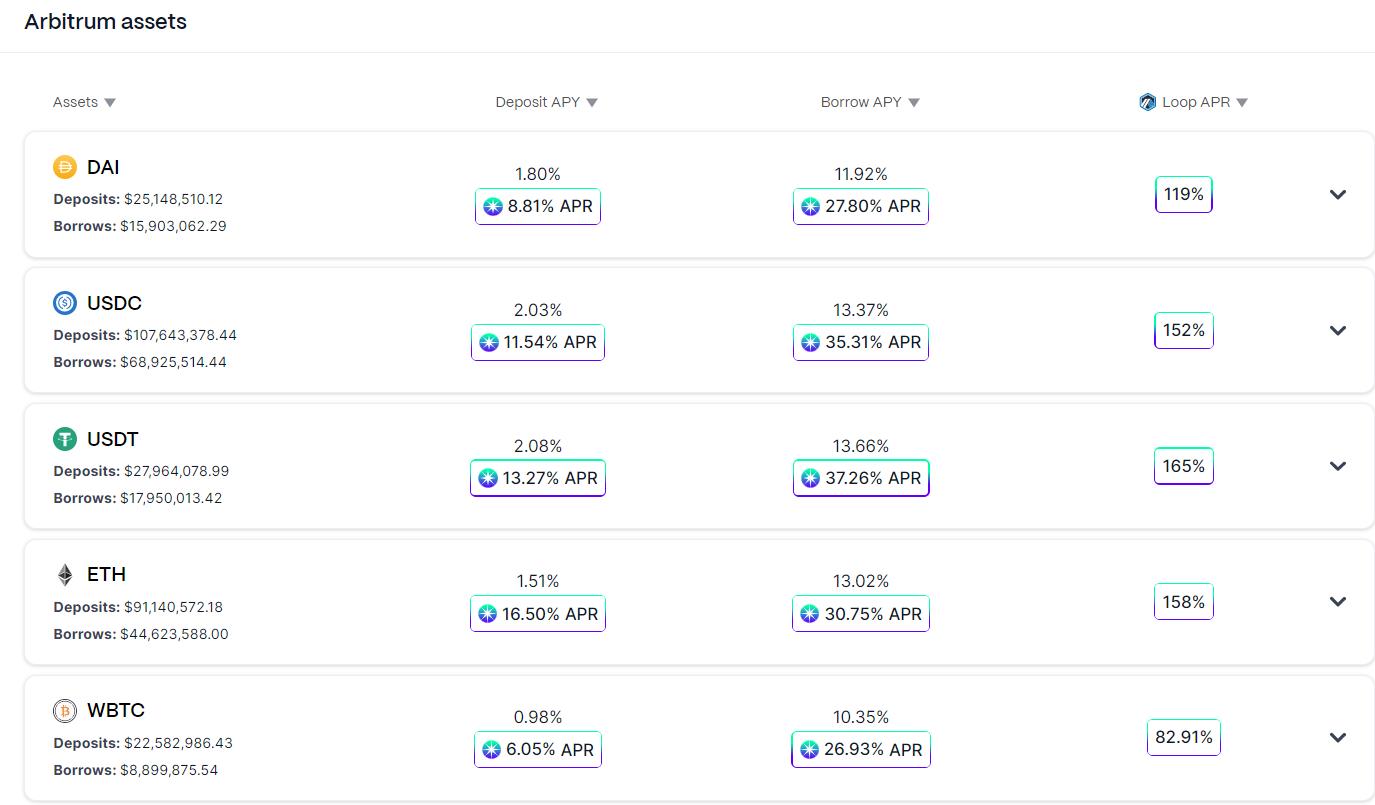
image description
Lending Assets Backed by Radiant
Radiant’s platform token is RDNT, with a total issuance of 1 billion, and the current quotation is $0.46.
secondary title
5. Decentralized "Nintendo" Treasure (MAGIC)
Treasure was originally an NFT project in the Loot ecosystem, and later became a decentralized game ecosystem that shares resources, communities, and infrastructure. The platform integrates applications such as NFT, DeFi, and GameFi, aiming to support NFT and metaverse projects to build their own ecology on the platform and realize the integration between projects.
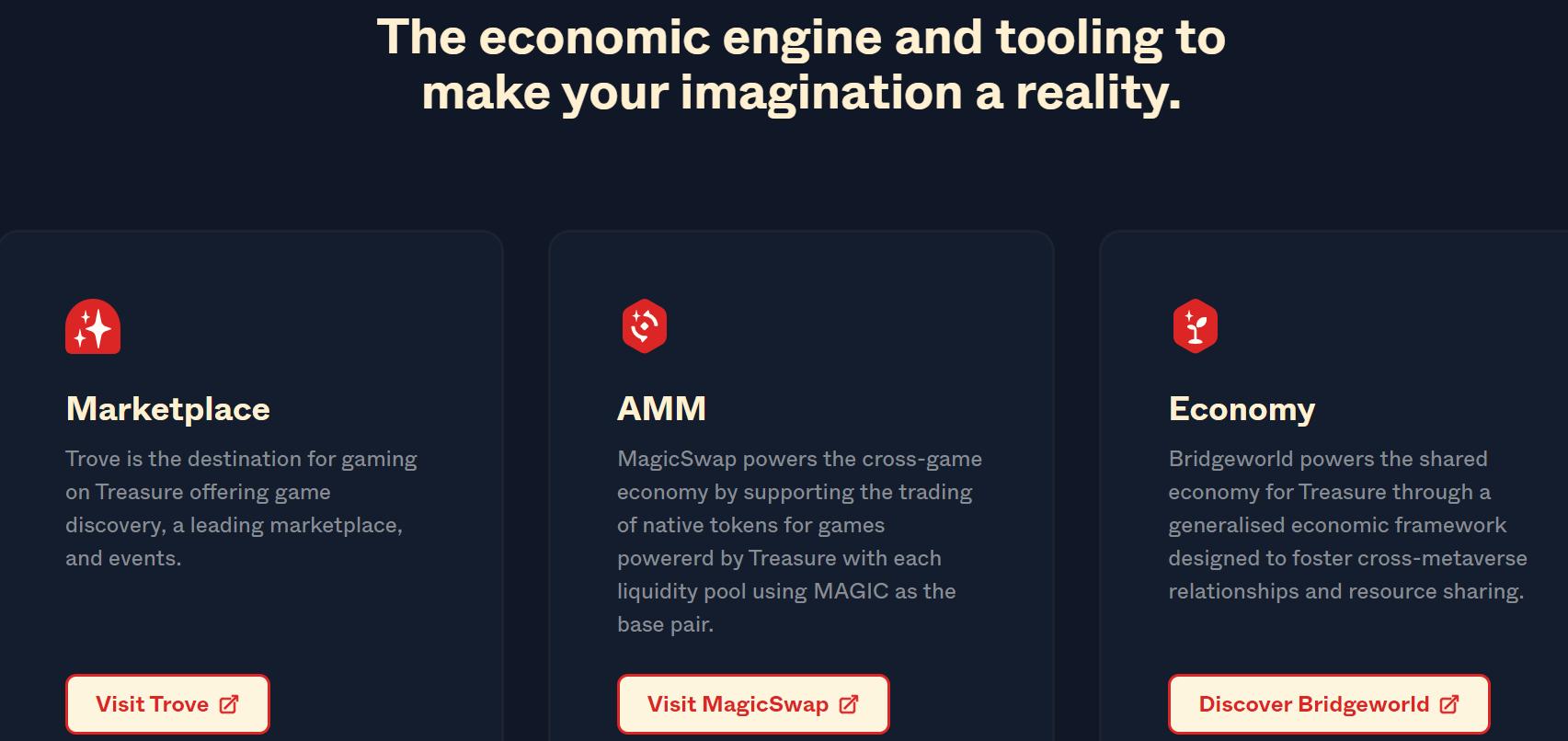
image description
Treasure products
MAGICAt present, the main products in the Treasure ecosystem include resource token MAGIC, NFT trading market Trove, DEX trading platform Magicswap, original and cooperative blockchain games.
TroveIt is the native token of Treasure DAO. It was first issued in September 2021, with a total supply of 500 million and a tentative price of $1.81. MAGIC is the core asset of the Treasure ecology. It can be used to purchase NFT, which acts as a payment medium. It can also consume MAGIC to participate in the game or upgrade and forge the characters in the game, generate new resources, and so on. MAGIC is a limited resource in the Treasure ecology, and the output will be less and less. Participants must find ways to obtain scarce MAGIC. The larger the number, the greater your energy in the Treasure ecology. Treasure is also building various stories around the acquisition of MAGIC.
MagicswapIt is the NFT trading platform of the Treasure ecosystem, which supports users to collect and purchase NFTs in the Treasure ecosystem. It will be launched in November 2021. It aims to become the Arbitrum ecological NFT trading platform that benchmarks against OpenSea. Currently, the NFTs launched on the Trove platform are denominated in ETH and MAGIC, and most of the NFTs on the Trove market are NFTs within the Treasure ecosystem. However, according to the official plan, Trove will allow unlicensed collections to be listed in the future, and it also plans to open a multi-chain ecosystem in the future.
It is the DEX in the Treasure ecosystem. Currently, it supports MAGIC/Gfly and MAGIC/ELM transactions, and the latter two make it the game token in the ecosystem.
BridgeworldBlockchain games include original games Bridgeworld, The Beacon, etc., as well as community games Smolverse.
The BeaconIt is an original game of the Treasure Ecosystem, a business strategy competitive strategy game where users can mine and harvest MAGIC tokens. The game incorporates multiple DeFi concepts, aiming to build a more open metaverse story connected by resources and narratives, which is the center of the Treasure metaverse. In this game, Legion is a hero character in the game and an important NFT asset. It can be purchased in the NFT market or cast with MAGIC. Players enter the game as a legion, and players can obtain reward attributes by arranging the legion to do tasks The "Treasure (Treasure) NFT", players can use the treasure NFT to mine MAGIC tokens, or generate new resources or mining props, etc., to speed up the production of MAGIC. In addition, BridgeWorld also supports players to build new stories or games for the NFT in the game, and also supports the integration of other project NFTs into the game.
SmolverseIt is a pixel-style action role-playing (RPG) game launched by Treasure. Players can obtain character NFT for free or for a fee, and then enter the dungeon for adventure or enter the tavern to answer questions. Both types of behavior can obtain the drop NFT, and the character obtained by paying The NFT obtained after the adventure can be sold on the NFT trading market for profit. The game was once a hit after its launch.
From this point of view, Treasure has become an incubator for new NFT or game projects. In addition to providing a series of infrastructure such as NFT trading platforms and DEX, it also forms a complete construction chain from birth, operation to subsequent stories of the project. Treasure has clearly become a decentralized "Nintendo", an incubation and distribution platform for NFT or game projects. .
secondary title
6. Gains network (GNS), a decentralized derivatives trading platform
Gains Network is a decentralized derivatives trading platform built on Polygon and Aribtrum. In addition to providing leveraged trading of cryptocurrencies, it also provides leveraged trading of foreign exchange, tokenized stocks, indices, etc.
The launched decentralized leveraged trading platform gTrade is the core product of Gains Network. According to Dune data, the gTrade platform has generated a transaction volume of 32.27 billion U.S. dollars and generated transaction fees of 23.23 million U.S. dollars.
No matter what the trading pair is, on the gTrade platform, the leveraged counterparty is provided by the DAI-only treasury. Like the user's GLP in GMX, the DAI treasury acts as the counterparty of the leveraged trader on the platform. Entering DAI can open airdrops or long positions. Users can also deposit DAI in the DAI vault to act as LP. While earning transaction fees, they need to bear the profit and loss of the counterparty as a leveraged trader.
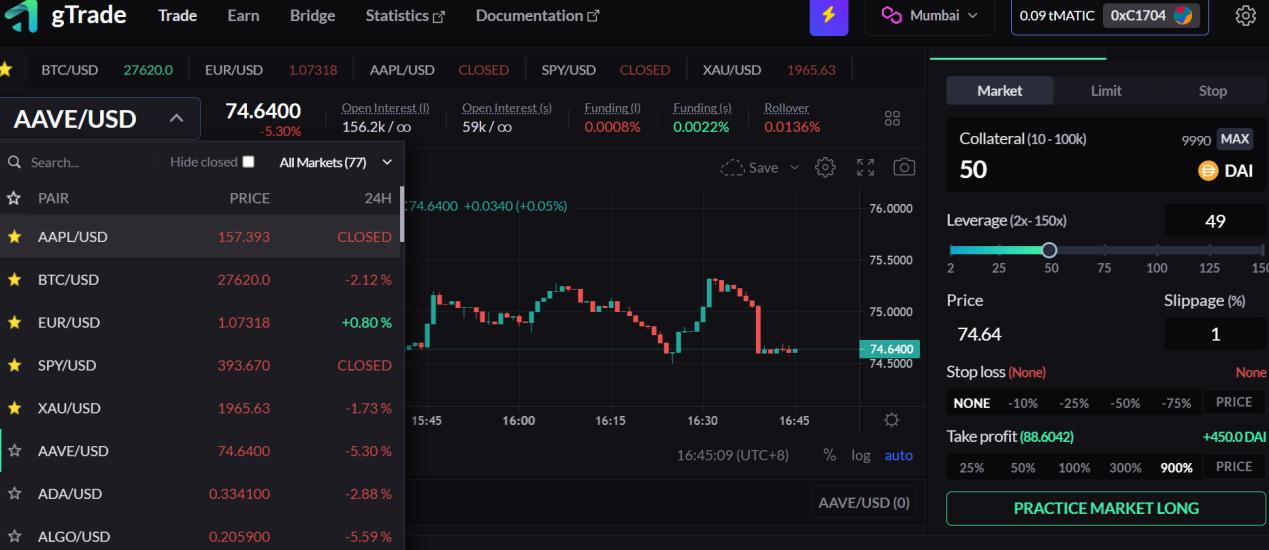
image description
gTrade trading pairs
Additionally, gTrade has a minimum position size of 1500 DAI on Polygon and 7500 DAI on Arbitrum, which is calculated by multiplying the user’s collateral by the user’s leverage. This means that if a user wants to use a position size of 10 DAI on Polygon, they should use a leverage of 150 times ( 10* 150 = 1500), of course users can use a lower leverage by using a higher collateral, as can be used 100 DAI collateral and 15 times leverage is enough ( 100* 15 = 1500).



